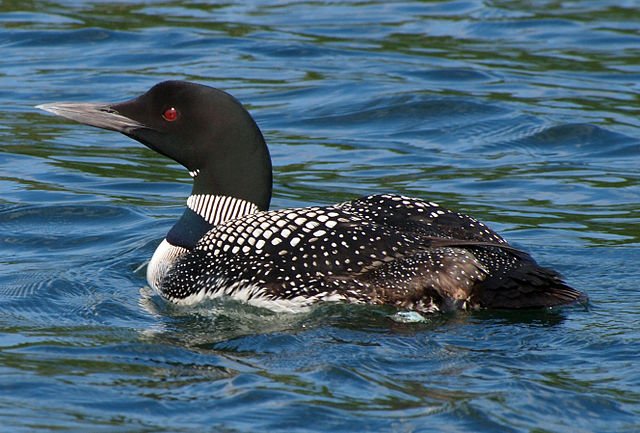
Image by John Picken/Wikimedia Commons
When aging male Common Loons begin to lose their mojo or die off, females are still going strong—and ready for action, even if that means seeking the attentions of younger males. That is one of many interesting findings from The Loon Project, which studies the territorial and breeding behavior of Loons in northern Wisconsin.
The behavior described in this blog post is observational, not the result of a rigorous, extensive testing. Still, it is the result of long-term, close behavioral study, and points toward areas scientists might want to investigate further.
Perhaps the most salient point made by the researcher is that this “cougar”-like behavior is “a striking example of how animals adapt to maximize their breeding capacity regardless of the breeding environment they face.” All the single ladies, take note.













Hi, Meredith!
This is a cool website. Glad I found it. Thanks for calling attention to many interesting finds and patterns in ornithology!
Thanks also for mentioning my website. Nice to know that people are looking at it on occasion! 🙂 I also appreciate you calling attention to one of our findings — that of many mated pairs that consist of an old female and young male. After reading your post, I decided to compute the number of pairs of each kind (old female/young male versus old male/young female). Based on my analysis, 36 of 54 (67%) current breeding loon pairs in our study area are of the old female/young male variety. So we have pretty good data to support my blog. I suppose I should have included those data in the post so that I would not create the impression that the makeup of mated pairs is not well documented. Anyway, those are the data.
You are correct that much of our data are observational, but I hope we have demonstrated that collection of a vast trove of data over more than two decades, using a marked population, and employing rigorous statistical tests can yield exciting and important findings that move science forward. Naturally, we cannot do the bevy of experiments on loons that others can carry out on lab mice, but we have rigorously documented many interesting patterns related to territorial settlement, breeding behavior, habitat selection and conservation. Recent examples are preference of natal habitat by young territory settlers, chick defense based on both age and number of chicks, selection of the nest location by the male of a pair, and rejection of the “foothold hypothesis” as a mechanism for settlement. I am putting the finishing touches now on a paper that documents senescence in male loons once they reach 20 years of age — but not in females — and shows that males remain aggressive throughout their lives. Together these findings show that males are employing a “terminal investment” strategy, which means they are cranking up the aggression late in life to compensate for loss of physical condition. (The result of the TI strategy is fatal male battles, which we have also documented recently.)
Anyway, thanks again for the shout out to my website. I appreciate it.
Walter Piper